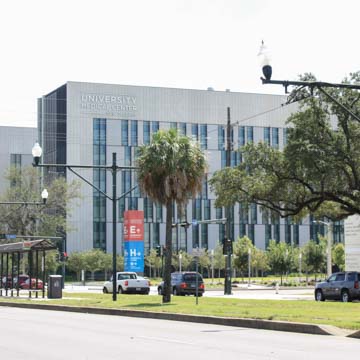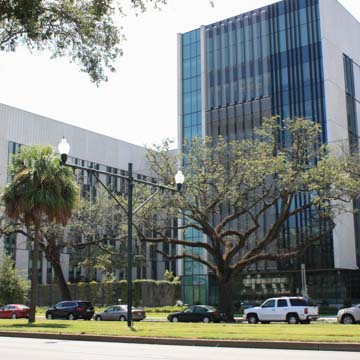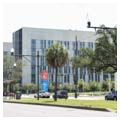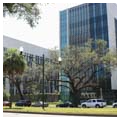This expansive complex, which includes both the UMC and the adjacent Veterans Administration (VA) Hospital, is a result of post-Hurricane Katrina “urban renewal” that effectively destroyed a working-class neighborhood of modest houses, many of which had been renovated by owners after the storm. Properties were seized through eminent domain, while the preservation community fought to have structures moved rather than being razed. Results were mixed; some structures were moved and languished in new locations, while others were destroyed. The argument for creating a vast medical complex here near the city’s Central Business District was economic and occurred at the state level, leaving the city with little input. To date, the rosy economic predictions and anticipated occupants of the complex have not materialized.
You are here
University Medical Center (UMC) of New Orleans
If SAH Archipedia has been useful to you, please consider supporting it.
SAH Archipedia tells the story of the United States through its buildings, landscapes, and cities. This freely available resource empowers the public with authoritative knowledge that deepens their understanding and appreciation of the built environment. But the Society of Architectural Historians, which created SAH Archipedia with University of Virginia Press, needs your support to maintain the high-caliber research, writing, photography, cartography, editing, design, and programming that make SAH Archipedia a trusted online resource available to all who value the history of place, heritage tourism, and learning.














